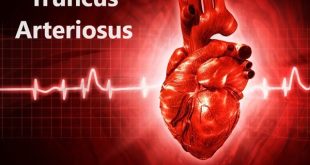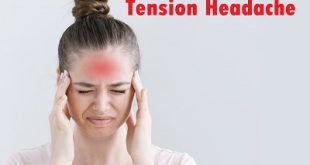Definition of Thyroid Eye Disease
People with thyroid disease sometimes develop an eye condition that causes the immune system to attack the muscles and other tissues around the eyes. This inflammation can cause the eyeballs to bulge from their sockets. Rarely, it can be severe enough to cause vision loss.
There are many different names you might find for the autoimmune eye condition that is often seen in people with thyroid disease. These names include:
- Thyroid eye disease, sometimes abbreviated as TED
- Graves’ opthalmopathy (GO)
- Thyroid-associated orbitopathy (TAO)
- Grave’s orbitopathy
Graves’ eye disease or thyroid eye disease is an autoimmune condition in which immune cells attack the thyroid gland which responds by secreting an excess amount of thyroid hormone. As a result, the thyroid gland enlarges and excess hormones increase metabolism.
Thyroid eye disease
The hypermetabolic state is characterized by fast pulse/heartbeat, palpitations, profuse sweating, high blood pressure, irritability, fatigue, weight loss, heat intolerance, and loss of hair and alterations in hair quality. When the immune system attacks the tissues around the eyes, it causes the eye muscles or fat to expand.
Thyroid eye disease
Pathophysiology
The pathogenesis of TED is a complex immunological process involving the TSH-receptor, fibroblasts, adipocytes, and a cytokine-mediated immunologic response. Orbital fibroblasts are a key component in modulating the orbital inflammatory process. Up-regulation and production of glycosaminoglycans and adipogenisis play a major role in orbital pathology.
Thyroid Eye Disease Risk factors
- Smoking increases the risk of getting thyroid eye disease if you have Graves? and aggravating the eyes if you already have TED.
- Smoking is associated with severe thyroid eye disease
- Treatment is less effective in people who smoke. These risks rapidly disappear in ex-smokers. Your GP surgery will advise you about help you can get to stop smoking
- Fluctuations in thyroid levels, particularly high thyroid stimulating hormone (TSH) i.e. hypothyroidism
Causes of Thyroid Eye Disease
- The cause of thyroid eye disease is due to autoimmune antibodies that affect both the thyroid and the structures of the eye socket.
- The condition is usually caused by Graves’ disease, a condition that causes over-activity of the thyroid gland, located in the neck area, which normally controls the metabolism of the body. However, the condition can occasionally be associated with an underactive thyroid. Patients with these conditions have a 1 in 5 risks of developing eye disease.
- In 3 out of 4 patients, the eye disease starts in the same year as the over (or under) active thyroid and can come on suddenly or more slowly. Smoking can increase the risk of developing eye disease and can lead to having a poorer response to treatment.
Mechanism of TED
TED is caused by an inflammatory response involving the tissues in and around the eye socket.
- TED patients produce autoantibodies (proteins of the immune system that aberrantly react against the body’s own cells) that bind to fibroblast cells within the eye socket
- When these antibodies bind, they cause the fibroblast cells to produce and release chemical signals and biologic materials that lead to swelling and congestion in and around the eye socket
- The main autoantibody produced by TED patients is known as Thyroid Stimulating Immunoglobulin (TSI), and this autoantibody can be measured in the blood to help monitor disease activity
- The amount of TSI present in a TED patient correlates with TED severity
- However, sometimes TED can occur without TSI formation
Symptoms
In Graves’ eye disease, the tissue around the eye is attacked, and the result is inflammation and swelling, causing:
- Redness and pain
- Puffiness around the eyes
- Bulging of the eyes
- Dry eye and irritation, occurring when the eyelids cannot close completely over bulging eyes
Progressive swelling may cause:
- Increased pressure inside the eye socket
- Pressure-pain or deep headache, which worsens with eye movements
- Decreased vision, when swollen tissues push on the optic nerve
The muscles around the eye are particularly susceptible to the attack of lymphocytes. As they tighten and lose their ability to stretch, these symptoms can occur:
- The eye is pushed forward in its socket causing a “staring” appearance
- Restriction of the eye’s normal movements, resulting in double vision
As symptoms build, many patients fear they will lose their vision. Fortunately, patients almost never go blind from Graves’ eye disease.
Complications of Thyroid Eye Disease
Most people do not develop permanent complications. However, where treatment is delayed or where the thyroid eye disease has been severe, there can be lasting effects. They are also more likely in older people, in those who smoke and in people with diabetes. Possible complications include:
Complications from the disease
- Damage to the clear window of the eye (the cornea)
- Permanent squint or double vision (diplopia)
- Damage to the nerve of the eye, resulting in poor vision or colour appreciation
- Altered appearance (eyes more protruding)
Complications from treatment
Side-effects from the immunosuppressive medicines and surgery:
- New double vision (about 15 in 100 people with thyroid eye disease)
- Loss of vision (fewer than 1 in 1,000 people with thyroid eye disease)
- There are some other very rare complications that your surgeon will talk you through
Diagnosis and test
Thyroid eye disease is typically diagnosed based on medical history and presenting symptoms.
- If a patient with some form of thyroid disease (such as hyperthyroidism or Graves’ disease, or hypothyroidism) experiences eye changes such as lid retraction, bulging eyes, redness, tearing, double vision, or loss of vision, their doctor may refer them to an ophthalmologist to be evaluated for thyroid eye disease.
- Blood tests may be done to check thyroid levels. Imaging tests, such as a CT scan or MRI of the orbits, can be used to evaluate the extent of inflammation.
Difference between the normal eye and thyroid eye
Treatment and medications
It is common for thyroid eye disease to fluctuate within the first one to two years of the disease. Beyond this time, the disease tends to stabilize. Medical therapy (immunosuppression and radiotherapy) are more effective in the active phase of the disease while surgical treatment is usually reserved for patients in the inactive phase.
It is important for you to be seen and treated by a physician for the underlying thyroid disease throughout this period. Although thyroid eye disease tends to improve with good thyroid hormone control, this is not always the case, and consultation with an ophthalmologist is necessary.
Local Therapy
Tear substitutes and lubricants help to protect the surface of the eye from drying. Taping your eyelids closed at night is also helpful. Sleeping on extra pillows helps to reduce swelling around the eyes.
Double vision can be troublesome if it affects straightforward and down-looking positions (as in reading). Special lenses called prisms may relieve this.
Immunosuppression
Your physician will advise you on a suitable treatment for thyroid disease. Steroids are used in selected cases. The effect of steroids is temporary and once it is stopped, systems often rebound. Steroids cause many undesirable side effects when used over a long period of time.
While you are on steroid treatment, your physician will monitor you for side effects which include obesity, gastric symptoms and bleeding, aggravation of diabetes and high blood pressure and decreased resistance to infection.
Radiation
Radiation is an effective way of reducing swelling of tissue around the eye and relieving compression of the optic nerve. The therapeutic dose used is low and it is usually not associated with significant adverse effects.
Surgery
When vision is threatened, early lid or orbital surgery may be necessary. Otherwise, surgery is usually reserved for stable, inactive disease with the following complications:
- Abnormal staring appearance
- Severe protrusion of the eyes
- Disturbing double vision not relieved by prism glasses
- Drooping or sagging of tissues around the eyes
Thyroid eye disease should be treated by ophthalmic surgeons who specialise in conditions affecting the eyelids and socket.
Prevention of Thyroid Eye Disease
To prevent TED from getting worse? Three things you can do are:
Ask your doctor for advice on how to stop, or enroll on a quit-smoking program. Patients with TED who continue to smoke respond less well to treatments, but this disadvantage seems to disappear soon after giving up smoking. Also non-smokers or ex-smokers are more likely to be cured of their thyroid over-activity after a course of Carbimazole (CMZ) or Propylthiouracil (PTU) treatment, than smokers.
Avoid fluctuations in your thyroid levels– Particularly hypothyroidism. Make sure that you have thyroid blood tests regularly, and follow the advice given by your doctor about when and how to take your medication. This will make sure that your thyroid levels remain normal and steady, which will give your eyes the best chance of healing and improve the way you feel.
Selenium supplements- Evidence suggests that patients with mild active TED may benefit from a six month course of selenium supplements at a dose of 100mcg twice daily which you can buy over the counter.
 Diseases Treatments Dictionary This is complete solution to read all diseases treatments Which covers Prevention, Causes, Symptoms, Medical Terms, Drugs, Prescription, Natural Remedies with cures and Treatments. Most of the common diseases were listed in names, split with categories.
Diseases Treatments Dictionary This is complete solution to read all diseases treatments Which covers Prevention, Causes, Symptoms, Medical Terms, Drugs, Prescription, Natural Remedies with cures and Treatments. Most of the common diseases were listed in names, split with categories.








hypothyroidism also causes hair loss due to slow cell replication rate. eg: thinning of lateral eye brows.
I can not read Bible or read news paper i can not drive in night please I need solution for eye
Please consult an ophthalmologist.
what kind of antibiotics that can cure this inflammation?
There are no antibiotics for this kind of disease.
l have that condition. what can I do?
please consult a doctor asap to alleviate future effects.
A good lesson for people to learn and know what to do .Thanks
j
what drugs can one take to solve this problem
Topical eye drops are chiefly prescribed to treat ocular surface disease. In the early, active phase of TED, ocular surface inflammation contributes to dry eye; this often responds to a low-dose topical steroid such as loteprednol or fluorometholone.